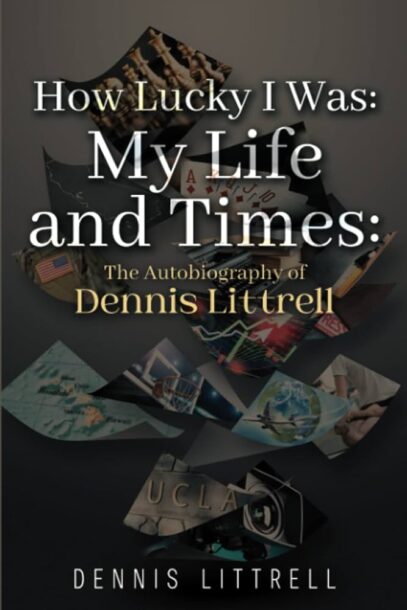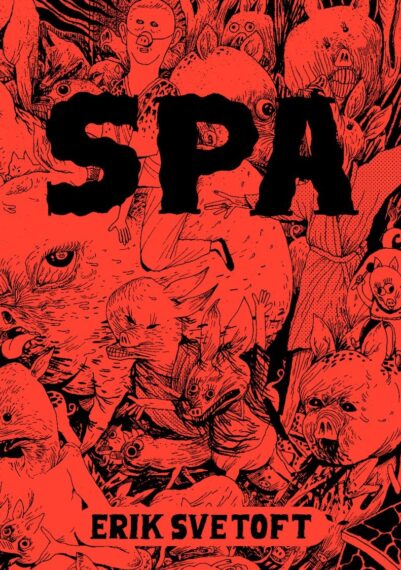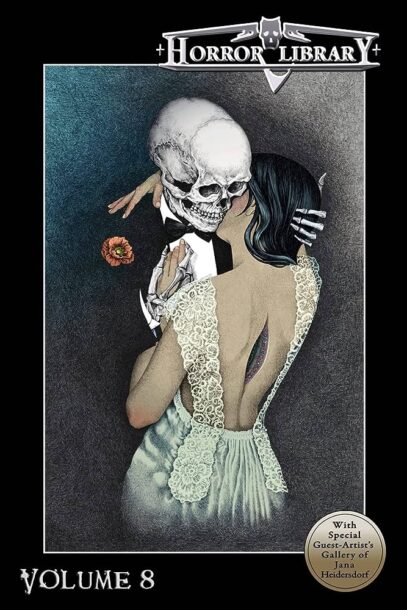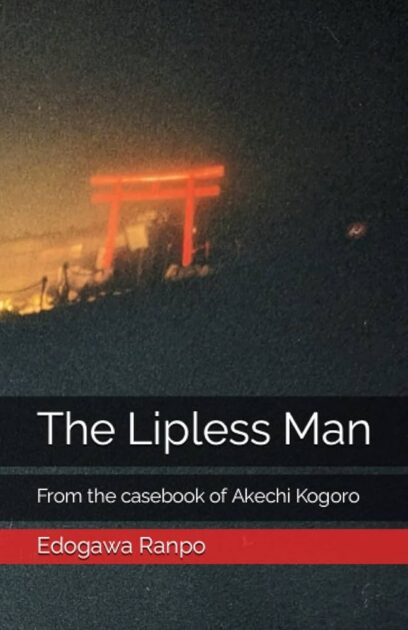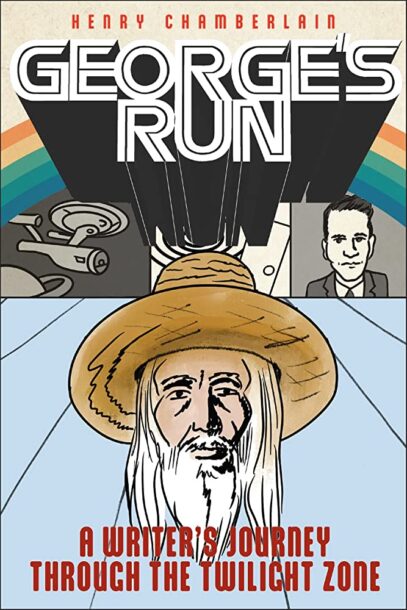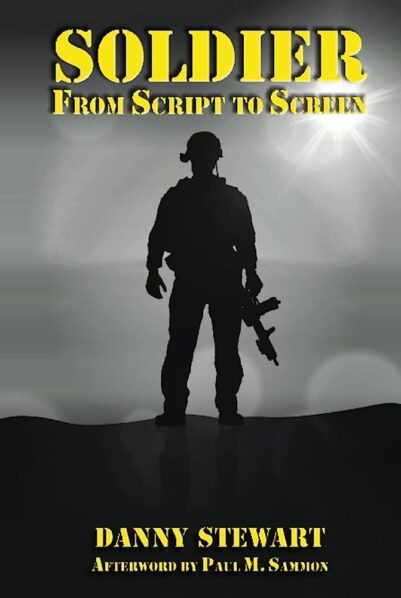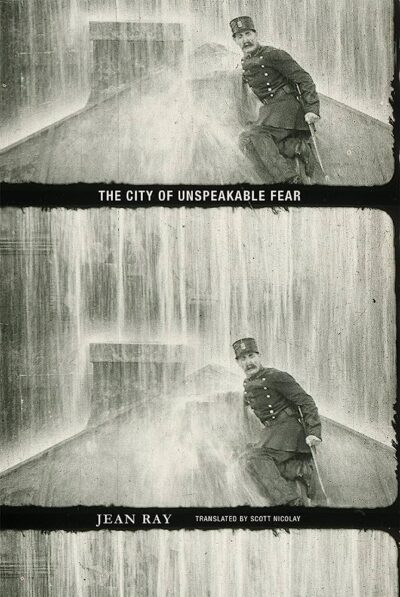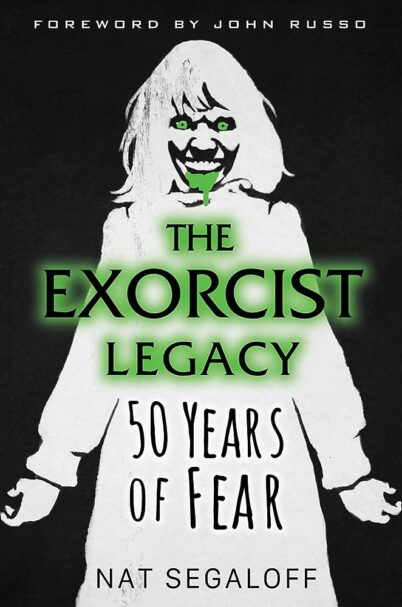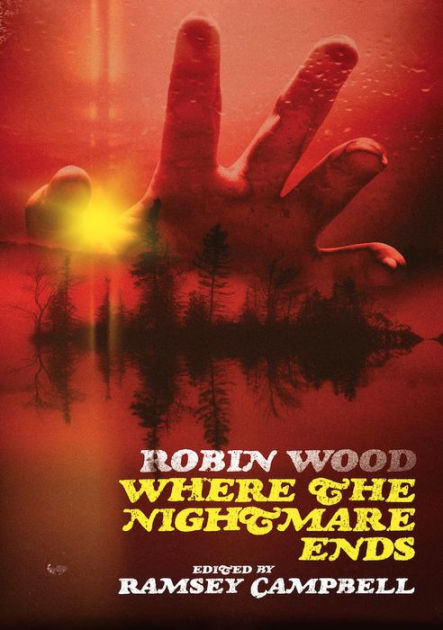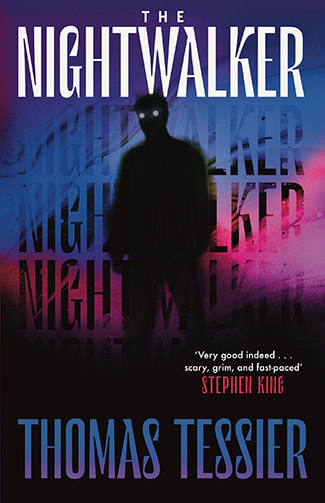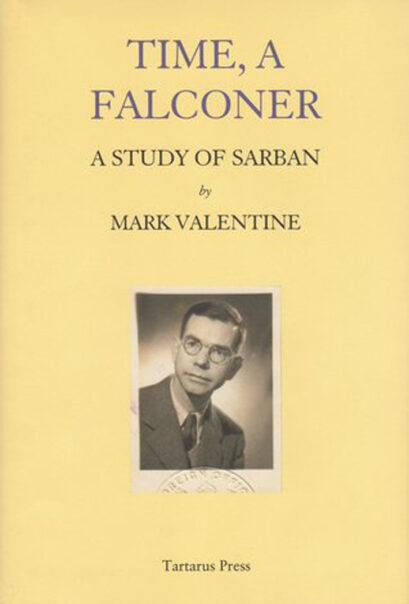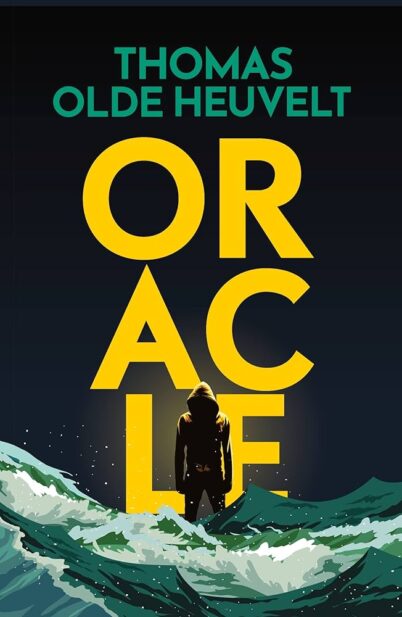- Best to Worst
- Other Noteworthy Finds
- Looking Forward…
- 2023: The Year in Bedlam
- 2023: A Look Back in Bedlam
Was 2023 a good year for publishing? I’m afraid I’ll have to answer that query with a firm Nope! In truth the year’s publications weren’t too divergent from those of 2021 or ‘22, but I say the many annoying tendencies that have overtaken the publishing industry—the political grandstanding, sensitivity reader vetting and vast overemphasis on “modern sensibilities”—reached a pinnacle in ‘23. For that reason I’ve largely avoided the output of mainstream publishers, and was pretty judicious about the indie outfits I perused.
As always, though, I managed to pick out some goodies, which prove that even in the worst of times good reading is available. Also, longtime Bedlam Files readers will note that I’ve altered my traditional BEDLAM IN PRINT formatting, offering up a simple best-to-worst ranking, starting with what I believe is a most deserving pick for Book of the Year…
BEST TO WORST
(Back to the top)
1. THE EXOTIC ONES: THAT FABULOUS FILMMAKING FAMILY FROM MUSIC CITY, USA–THE ORMONDS by JIMMY McDONOUGH (FAB Press)
I find it hard to believe that this large format hardcover is the first book devoted to the Ormond family, but it more than delivers. Featuring a mind-roasting plethora of photographic illustrations, THE EXOTIC ONES was written by Jimmy McDonough, who begins this “secret history of American entertainment” in 1935, when filmmaker Ron Ormond first met his soulmate June. The two were married and formed a vaudeville partnership, and eventually branched off into filmmaking, in the form of exploitation quickies like MESA OF LOST WOMEN (1953) and PLEASE DON’T TOUCH ME (1959). But then, in October 1967, the Ormonds were involved in a near-fatal plane crash that radically changed their orientation. They teamed up with the Mississippi based evangelist Estus Pirkle to make the outrageous evangelical screed IF FOOTMEN TIRE YOU, WHAT WILL HORSES DO? (1971), followed by similarly minded fare like THE BURNING HELL (1974) and THE BELIEVER’S HEAVEN (1977). Ron Ormond died in 1981 and June in 2006, while their son Tim currently resides, impoverished and cancer-ridden, in a friend’s basement. As McDonough states near the end of this book, “Which of us will be standing when this book comes out? Lord knows.” I’m glad to report that as of January 2024, Tim Ormond and Jimmy McDonough are still upright.
2. NAKED THEATER AND UNCENSORED HORROR by STUART GORDON (FAB Press)
The long-in-coming memoir of filmmaker Stuart Gordon (1947-2020). A big deal? Absolutely! Gordon begins his recounting in 1965, when he left his Chicago home to attend the University of Wisconsin. It was there that Gordon met actress Carolyn Purdy, who’d become his wife (in a union that produced three daughters and lasted until his death), and discovered what initially seemed like the other major love of his life: theater. Gordon’s early attempts at stage directing caused ruckuses that mirrored the civil unrest of the late 1960s, and brought him into contact with “a young local playwright who seemed to have written a new script every other day” named David Mamet. Success, unfortunately, proved elusive, and a more lucrative artistic calling sounded when, starting with RE-ANIMATOR (1985), Gordon turned to filmmaking, which pushed his taste for macabre excess to a height his theater work never allowed for. This book may ultimately be a bit overlong, and even a mite unwieldy, but must nonetheless be crowned the ultimate print resource on a vital talent who (despite what some jerks might have you believe) left behind an extremely rich and varied body of work.
3. EVERY MAN FOR HIMSELF AND GOD AGAINST ALL by WERNER HERZOG (Penguin Press)
For fans of the German filmmaker Werner Herzog this memoir may seem a bit anti-climactic. This is to say that the colorful and gregarious Herzog has aired the details of his life quite voluminously over the years, meaning most of the stories related in EVERY MAN FOR HIMSELF AND GOD AGAINST ALL have already been told. Yet Herzog’s voice, inflected with a Germanic grandiosity paired with a highly quirky poetic dissonance, is always fascinating. The book commences, appropriately enough, with Herzog’s impoverished childhood and teenage years, when he converted for a brief time to Catholicism and began making short films, with his debut feature being 1968’s SIGNS OF LIFE/Lebenszeichen. Herzog’s deeply idiosyncratic approach to filmmaking was formed in large part by the fact that he didn’t see any films growing up, meaning that “I would have to come up with a cinema of my own.” To fully cover Herzog’s varied life and filmography would require a book much longer than this one, and nor does it outdo Paul Cronin’s WERNER HERZOG—A GUIDE FOR THE PERPLEXED as the definitive print resource on this endlessly mercurial figure. Nonetheless, readers wanting the skinny on all things Werner Herzog will come away from EVERY MAN FOR HIMSELF AND GOD AGAINST ALL sated.
4. OPPOSABLE THUMBS: HOW SISKEL AND EBERT CHANGED MOVIES FOREVER by MATT SINGER (G.P. Putnam’s Sons)
The Chicago-based film critics Gene Siskel (1946-1999) and Roger Ebert (1942-2013) are both long gone, but their impact on film criticism, and film overall, is undeniable. Their fame is due to a TV partnership that began on the PBS program OPENING SOON…AT A THEATER NEAR YOU in 1975, and concluded with ABC’s identically formatted SISKEL & EBERT in 1999. The secret of S&E’s success was their fire-and-water chemistry, which led to numerous on-air spats (crewmembers reportedly had quite a time corralling these two, with “I can’t believe what they put me through!” being a common sentiment), and their non-telegenic appearance; these guys didn’t look or sound like anyone else on TV, then or now. In OPPOSABLE THUMBS film critic Matt Singer attempts a concise history of the Siskel and Ebert partnership; I say attempts because S&E were apparently as combative off-screen as they were on the air, leaving Singer with a RASHOMON-like maze of conflicting accounts through which to sift. Ultimately, though, this book provides an enjoyable history of a never-to-be-repeated dynamic.
5. HOW LUCKY I WAS: MY LIFE AND TIMES by DENNIS LITTRELL
Dennis Littrell is a writer, teacher (who counted yours-truly among his pupils), book/movie reviewer and professional poker player, and HOW LUCKY I WAS is his self-published autobiography. Littrell’s major attribute as a writer is his honesty: he pulls no punches, rendering his recollections with a laudable no-fucks-left-to-give bluntness. In this book Littrell takes us through his rough-and-tumble 1950s childhood, much of it spent in an Azusa, CA halfway house for boys. He later served in the army and attended UCLA, followed by brief stints as a newspaper reporter and novelist (with the 1973 novel A PERFECTLY NATURAL ACT), with his major source of income being his winnings at poker tournaments. In the late eighties Littrell decided to become a teacher, and secured a job at Mira Costa High School in Manhattan Beach, CA. This, however, landed him in a hotbed of racism, sexism and snobbery, a situation rendered even bleaker by the 1994 death of his second wife from cancer, which is described in downright excruciating detail. It took until the early aughts for Littrell to regain his equilibrium, via a most unexpected source: he became a top-rated reviewer on Amazon. Things get gloomy in the final hundred pages, whose tenor is indicated by chapter headings like “Physical and Mental Decline,” “Feeling Worthless” and “I Become and Alcoholic, But So What?” This might not be the book we California bred Mira Costa grads want, but it is very likely the one we need.
6. HALLOWEEN 3—“WHERE THE HELL IS MICHAEL MYERS?” by TOMMY LEE WALLACE (BearManor Media)
Regarding 1982’s HALLOWEEN III: SEASON OF THE WITCH, I admire its ambition, but the story, about an evil scientist injecting pieces of Stonehenge into Halloween masks that when exposed to a TV signal cause the wearers’ heads to split open and disgorge bugs and snakes, is too asinine to take even partially seriously. H3 has, however, amassed a substantial cult following, and I can’t say the existence of a behind-the-scenes history of this anti-classic doesn’t intrigue me. Author Tommy Lee Wallace, who wrote and directed H3, claims he turned down an offer to direct HALLOWEEN II but jumped at the chance to helm the third installment, mainly because it didn’t feature Michael Myers—that aspect, alas, turned out to be the single most pressing issue facing H3 from a commercial standpoint. Wallace, in any event, proves a likeable and compelling raconteur, being quite frank about the mistakes he made and lessons he learned, thus providing an excellent primer for aspiring directors in addition to a fun read.
7. SPA by ERIK SVETOFT (Fantagraphics Books)
A graphic novel hailing from Sweden, issued in a handsomely formatted English translation. A quasi-satiric, surreal vision of transmutation and reality displacement, SPA is set in a bathhouse whose proprietors promise “space for relaxation and human interaction” via a series of specially tailored holistic treatments. There’s no story to speak of, with the driving element being a sense of overpowering weirdness that commences with some fly-ridden corpses glimpsed in various corners of the spa, and a spot of mold that gradually expands. Erik Svetoft’s black and white drawings are what truly make SPA the standout publication it is; as with the best manga artists, Svetoft has a gift for packing his ideas into sparsely worded full page panels that don’t require close study. He also favors swirling, blood-spattered backgrounds, which given the book’s surreal-horrific gist are an entirely appropriate choice.
8. CORMAN/POE by CHRIS ALEXANDER (Headpress)
In which the veteran writer, editor and lifelong Roger Corman aficionado Chris Alexander explores Corman’s 1960-64 cycle of Edgar Allan Poe inspired films. Alexander’s chapter-by-chapter approach consists of a detailed synopsis of each film, followed by an interview about it with Corman (the interviews were apparently conducted over a 20 years interval) and a critical analysis. Corman’s Poe cycle, which he views as “highlights of my directorial career,” commenced with THE FALL OF THE HOUSE OF USHER, and continued with THE PIT AND THE PENDULUM, THE PREMATURE BURIAL, TALES OF TERROR, THE RAVEN, THE HAUNTED PALACE, THE MASQUE OF THE RED DEATH and THE TOMB OF LIGEIA. Taken as a whole, the cycle amply demonstrates Corman’s filmmaking range, encompassing Grand Guignol horror, comedy and “Shakespeare from Hell” theatricality. Corman’s interview comments are, as I’d expect, erudite and intelligent; he refrains from put-downs yet is nonetheless quite frank. As AIP’s late Sam Arkoff wrote, “Roger is Roger,” and I for one wouldn’t have it any other way.
9. HORROR LIBRARY VOLUME 8 Edited by ERIC J. GUIGNARD (Dark Moon Books)
The eighth entry in Dark Moon Books’ HORROR LIBRARY anthology series. Being familiar with editor Eric J. Guignard’s previous output, I had high expectations for this book, and wasn’t disappointed. The 31 stories collected here are distinguished by their eclecticism and shunning of traditional horror tropes. Among the stand-outs are “Fishers Of—” by Frances Ogamba, which offers a novel take on the theme of soul snatching; the story is told from the point of view of an individual who makes soul “haulings,” and details what occurs when one such hauling goes horrifically wrong. “Story of her Life” by Tom Johnstone is another goodie, a slipstreamy tale that involves writing, masks and a fateful contract. There’s also “Blockchain” by Dexter McLeod, an apocalyptic tale the book’s editor calls “so very, very dark,” and “Zipper Back” by Thersa Matsuura, who accurately describes her story as “JOHNNY GOT HIS GUN meets Kaiju.” The book’s final pages consist of a mini-gallery of artwork by the German artist Jana Heidersdorf, whose art has a childlike sheen partnered with a very grown-up grasp of the macabre.
10. AESTHETIC DEVIATIONS: A CRITICAL VIEW OF AMERICAN SHOT-ON-VIDEO HORROR, 1984-1994 by VINCENT A. ALBARANO (Headpress)
Shot-on-video horror films are a touchy subject. Such features are for the most part pretty lousy, but exert an odd fascination in the way they challenge one’s long-held beliefs about good and bad filmmaking. Far removed from traditional “so-bad-it’s-good” standards, SOV fare demands a radical re-orientation on the part of the viewer as to what precisely constitutes quality cinema. These issues are grappled with at some length by Vincent A. Albarano in AESTHETIC DEVIATIONS, the first in-depth critical study of SOV horror. Albarano, as he makes unashamedly clear, greatly appreciates these films, which he views as existing in “a parallel universe to mainstream horror, the dark sibling to the celebrated horror wave of the 1980s.” The titles under examination include TALES FROM THE QUADEAD ZONE (1987), DEMON DOLLS (1993), TWISTED ISSUES (1888), VIDEO VIOLENCE (1987) and ALIEN BEASTS (1991), and names like Andre Bazin, Siegfried Kracauer and Andre Breton are invoked to bolster films that, as Albarano quite rightly claims, “compare to no others in existence.”
11. THE LIPLESS MAN: FROM THE CASEBOOK OF AKECHI KOGORO by EDOGAWA RANPO
The latest in a long line of independently published translations of the work of Edogawa Ranpo (or, as the name is more commonly rendered, Rampo) by Alexis J. Brown. THE LIPLESS MAN was initially published in Japanese in 1930, and was the fifth Ranpo novel to be headlined by the detective Akechi Kogoro—joined here for the first time by the youthful Kobayashi. The case concerns a freakish individual with a hollowed-out nose and lipless mouth, who may or may not be a deranged killer whose methodology involves encasing corpses in statues. Kogoro and Kobayashi find themselves in hot pursuit of this freak, which proves an extremely labyrinthine and surprise-filled odyssey. Ranpo’s affinity for the macabre is evident in the copious bleeding doll imagery, a nerve-shredding description of an internment in a coffin, and the last-minute appearance of a “human chair” (taken from Ranpo’s own 1925 story of that name). The whole thing is quite dated, with murderous methodology that won’t surprise contemporary readers (it seems downright inexplicable that in investigating the crime scenes nobody ever thinks to check the ceilings) and a hoary last-minute confession that, as was the case in many old school mystery tales, wraps things up far too neatly.
12. BAD MOVIE NIGHT by PATRICK LACEY (Grindhouse Press)
The idea of a cursed film, previously aired in Theodore’s Roszak’s classic FLICKER and many other narratives, is reintroduced in Patrick Lacey’s BAD MOVIE NIGHT. No, this novella length book will never displace Roszak’s, but it is memorable. It’s set in two milieus I know quite well: the cult movie and horror convention communities, both of which are described with notable accuracy. The protagonist, whose voice narrates in the second person, runs a YouTube channel dedicated to so-bad-it’s-good cinema. As with many a cult movie buff (this one included), this guy has a retinue of “lost” films he’s constantly in search of, and manages to track down one of them, a supposedly cursed slasher pic called CREEPIES. The protagonist tests the “cursed” claim by watching the thing–which is, as you might guess, a bad idea, as he finds his sense of reality gradually dissolving and a horrific past event coming back into mental prominence. It’s a good (if slight) story, well told and bearing some honest-to-goodness relevance, especially for those who know the reality it explores.
13. GEORGE’S RUN: A WRITER’S JOURNEY THROUGH THE TWILIGHT ZONE by HENRY CHAMBERLAIN (Rutgers University Press)
George Clayton Johnson (1929-2015), an eighth grade dropout and proto-hippie from Wyoming, was one of the lesser known members of “The Group” corralled by Rod Serling to write for THE TWILIGHT ZONE (other members included William Nolan, Richard Matheson and Charles Beaumont). Johnson subsequently wrote quite extensively for STAR TREK and co-drafted (with Nolan) the 1967 sci fi novel LOGAN’S RUN, which was made into the famous 1976 flick of the same name; no, that’s not a hugely extensive bibliography, but it is a substantial one. GEORGE’S RUN, the first book to be devoted exclusively to George Clayton Johnson, is drafted in the form of a graphic novel. The writer and illustrator was Henry Chamberlain, a podcaster who eagerly inserts himself into the book by dramatizing his 2014 meetings with Johnson. According to what’s set down here, these two were kindred spirits, sharing identical interests, hang-ups and political views. Chamberlain’s rather crude artwork isn’t exactly award-worthy, which begs the question of why this book was even presented in graphic novel and not textual form (in which rendering it would have worked fine).
14. THE STRANGERS by JON BILBAO (Dalkey Archive Press)
Written by “one of the most important figures in Spanish narrative of the twenty-first century,” THE STRANGERS imparts a powerful sense of otherworldly strangeness. The “otherworldly” designation is meant literally, as in the opening pages strange lights appear in the sky over the house where the unhappily married protagonists Katherina and Jon are vacationing. A crush of ufologists invade the area, along with Virginia and Markel, the latter of whom claims to be Jon’s second cousin. Jon has no memory of Markel but allows him and Virginia to stay in the house—much to his regret. Among M&V’s sins are a standoffish attitude, a tendency to keep their lodgings in a state of unbelievable squalor and the fact that they simply won’t leave. Pandemic anxiety would appear to be a major component in this book’s conception, as would themes like the fallacy of blind trust and the dangers of routine. What really distinguishes THE STRANGERS is the oddly detached quality of descriptions (adroitly translated by Kate Whittemore) like “Their fingers are numb from the cold. They look and discover that they’re bleeding, they hadn’t even noticed. Sucking the wounds, they ask where they can get something to drink around here,” which of course compliments the subject matter.
15. SOLDIER: FROM SCRIPT TO SCREEN by DANNY STEWART (Bear Manor Media)
An in-depth look at the making of the 1998 science fiction flop SOLDIER. Featured are in-depth interviews with quite a few of SOLDIER’S crewmembers, and critical analyses by John Hansen, Mark Stratton and John Kenneth Muir. Author Danny Stewart really reveres SOLDIER, and makes an impassioned case for its brilliance, proclaiming its David Webb Peoples script “a true genre landmark.” Peoples is among the interviewees, lamenting that “the studio didn’t get” his screenplay and admitting he’s never seen the finished film. Other interviewees include associate producer Fred Fontana, production designer David L. Snyder, actor Mark Bringleson and visual effects supervisor Van Ling. Regarding SOLDIER’s artistic qualities, I tend to agree with author Paul M. Sammon, who in an afterword takes the film to task for its “pedestrian direction, misjudged horror flourishes (and) listless pace,” but the enthusiasm of Stewart and his collaborators is infectious, and makes me wonder if a personal reappraisal might not be in order.
16. BLOOD LIGHT by KURT STEINER (Black Coat Press)
Kurt Steiner, a.k.a. Andre Ruellan (1922-2016), was one of France’s most famous pulp writers. BLOOD LIGHT is the first of several Steiner translations put out by Black Coat Press. It consists of two horror-tinged Steiner novels, BLOOD LIGHT (1958) and A SHROUD OF MIST (1959), both translated (or “Adapted”) by Sheryl Curtis. BLOOD LIGHT features a lost man stumbling upon a secluded mansion whose labyrinthine interior is lit by an eerie reddish light, and populated by a gorgeous young woman and her uncle, who believes he’s the reincarnation of a long-dead ancestor. It’s readable, but has a definite made-up-as-the-author-went-along air, and melodrama that even by French pulp fiction standards feels overwrought. A SHROUD OF MIST is set in a tiny seafront village plagued by ghostly appearances and unexplained murder, things that appear to emanate from an old cemetery and a long-dead sailor. It’s a much stronger work than its predecessor, with a potent sense of otherworldly apprehension that intensifies as the story advances. What both novels have in common is a quintessentially Gallic grasp of the dreamlike and irrational, demonstrating just how strongly the tenants of surrealism have shaped modern French culture.
17. THE CITY OF UNSPEAKABLE FEAR by JEAN RAY (Wakefield Press)
A rare example of a novel-length narrative by Belgium’s Jean Ray (who specialized in short stories). THE CITY OF UNSPEAKABLE FEAR isn’t in the same league as Ray’s other major novel MALPERTUIS, being a fairly conventional (by 1940s European standards) potboiler. Nonetheless, Ray’s authorial voice, with its nonchalant acceptance of the supernatural and audacious genre-mixing—it reads, by turns, like a Lovecraftian horror story, a whodunit and a parody of both—is always intriguing. The setting is Ingersham, a UK community beset by a rash of apparently supernatural manifestations that leave numerous corpses in their wake. Enter Sidney Terence Trigs, a retired traffic cop who originated in Ingersham, and who is mistaken by the townspeople for a decorated police inspector—becoming a “detective in spite of himself.” I’m at odds with “Scooby Doo” endings in which what appeared to be supernatural phenomena are revealed to be the work of entirely natural machinations, and THE CITY OF UNSPEAKABLE FEAR, I’m sorry to report, has one of those endings, although the final chapter adds an extra wrinkle to the “is-it-or-isn’t-it” conundrum that closes the book out on a memorably chilly note.
18. BABY FIGHTS by ROBERT ESSIG (Infected Voices Publishing)
A novella that begins with a pointed warning: “This book is every bit as fucked up as the title suggests. You have been warned.” It’s about Madison, the San Diego based mother of an infant named Hunter. Both are kidnapped from a Walmart parking lot by Ducky, a slimy fuck who stages Baby Fights in which infants, shot full of angel dust, fight each other to the death. Hunter is set up by Ducky to be one of the fighters and Madison is made a nurturer, or milk-giver, for the other babies, but of course things don’t quite go as planned. Yes, this book is plenty fucked up, being chock-full of graphic mayhem of every conceivable variety, although it’s all so implausible and plain ridiculous that none of it is ever very troubling. Quite simply: it tries way too hard to shock and offend, and, as is often the case with books like this one, ultimately cancels itself out.
19. THE EXORCIST LEGACY: 50 YEARS OF FEAR by NAT SEGALOFF (Citadel)
Author Nat Segaloff was working in the Warner Bros. Publicity department when THE EXORCIST premiered in 1973, and in later years penned a solid 1990 biography of its director William Friedkin (in addition to equally solid books on Harlan Ellison and John Milius). Adapted from a 1971 bestseller by the late William Peter Blatty, THE EXORCIST offered a naturalistic presentation of a demonically possessed girl (Linda Blair) and a troubled priest (Jason Miller) that has never been matched, not even by its own director. Included in this Segaloff authored book are brief biographies of Friedkin and Blatty, a recounting of the allegedly factual 1949 case of demonic possession that inspired Blatty, and profiles of the EXORCIST sequels. Most of Segaloff’s revelations have already been revealed (such as a “true” account by Friedkin about Warner executives being chased out of a premiere screening of EXORCIST II by outraged patrons, which has already been told, retold and debunked), but for the EXORCIST novice THE EXORCIST LEGACY will suffice.
20. EVERYWHERE AN OINK OINK by DAVID MAMET (Simon & Schuster)
A disappointment that purports to relate David Mamet’s misadventures in Tinseltown, but the tone is so jokey and offhanded it’s difficult to tell if we’re supposed to take any of it seriously. Mamet doubtless has some juicy stories to tell about his time in Hollywood, but the most he comes up with here are some mildly amusing anecdotes, such as getting fired off LOLITA (1997) because his script, in the words of producer Dick Zanuck, “made (the main character) seem like a pedophile,” and having another script turned down by Denzel Washington because Mamet was too sycophantic in his greeting. Beyond that we get a lot of self-satisfied witticisms like “If O.J. had been a little neater in his entertainment, he’d have been allowed to walk away without the inconvenience of a trial” and poorly drafted illustrations. I say Mamet can do better.
21. WHERE THE NIGHTMARE ENDS by ROBIN WOOD (PS Publishing)
A posthumously published novel by Robin Wood (1931-2009), a film critic and longtime horror enthusiast (as demonstrated by the classic monograph THE AMERICAN NIGHTMARE). I have several problems with WHERE THE NIGHTMARE ENDS, starting with the fact that its story isn’t particularly original, being redolent of IT’S ALIVE (1974) and FRIDAY THE 13th (1980). The latter is evoked in the set-up, involving a group of sexually precocious young people on a secluded island sojourn. A year earlier a middle-aged British couple settled into a house on the island, and birthed a child that was allegedly born dead, with its elders subsequently dying under circumstances that remain obscure. When the boat ferrying the young folk crashes on the rocks bordering the island, the group is stranded in the British couple’s now-deserted house, where a monstrous baby (the one that was supposed to be dead) emerges from the cellar to lay waste to everything in its path. To continue with the negatives: the characters are uniformly off-putting, the dialogue bland and the narrative hopelessly contrived. With more practice Mr. Wood might have become a skilled novelist, but when he wrote WHERE THE NIGHTMARE ENDS he hadn’t yet reached that point.
INCIDENT ON AND OFF A MOUNTAIN ROAD by JOE R. LANSDALE (Crystal Lake Publishing)
A standalone edition of Joe Lansdale’s blistering 1991 story “Incident On and Off A Mountain Road,” with illustrations by Ted DiLucia and introductions Mick Garris and Don Coscarelli.
JAPANESE GOTHIC: FOUR TWISTED TALES FROM JAPAN’S MASTER OF THE MACABRE by EDOGAWA RANPO
Another long-in-coming Ranpo translation by Alexis Brown, consisting of four stories, two of which—“Pomegranate” and “The Devouring Insects”—have been previously translated, while the other two—“The Idol” and “The Hand”—haven’t.
THE NIGHTWALKER by THOMAS TESSIER (Valancourt Books)
A novel that was essentially rewritten, and in more potent form, as FOG HEART (1997). Yet Thomas Tessier’s THE NIGHTWALKER (1979), offered up in a Valancourt reprinting, remains a potent piece of work that mixes lycanthropy and reincarnation into a most fascinating whole.
PAPERBACK FANATIC #47
The latest issue of the indispensable Justin Marriott edited PAPERBACK FANATIC, featuring articles on folk horror, Clifford Simak, Mickey Spillane and other bookish subjects.
SHOCK CINEMA #63
A new issue of Steven Puchalski’s SHOCK CINEMA movie review mag is always worth waiting for, and this one, featuring interviews with Karen Allen, David Selby and Jerrold Freedman, doesn’t disappoint. The reviews, of obscure films like LA POUPEE and WITHOUT A STITCH (as well as several drafted by yours-truly), aren’t bad, either.
THEOREM by PIER PAOLO PASOLINI (New York Review Book Classics)
Apparently the “strangest work of fiction” by Italy’s late Pier Paolo Pasolini, a highly surreal Marxist parable that was adapted into the 1968 film of the same name.
TIME, A FALCONER: A STUDY OF SARBAN by MARK VALENTINE (Tartarus Press)
The premiere trade paperback edition of the one and only biography of England’s John W. Wall, a.k.a. Sarban, a shamefully little-known master of the macabre.
UGLY MUG #7
The latest installment of the UK based House of Harley’s UGLY MUG series of underground comix art. If you’re familiar with any of the previous UGLY MUGS (see here and here) you’ll have some idea of what to expect, but if not this mind-roasting compilation will make for an excellent introduction.
Looking Forward…
(Back to the top)
COMBAT SHOCK by BUDDY GIOVINAZZO (Severin)
The long-in-coming novelization of the 1984 no-budgeter COMBAT SHOCK, written by the film’s writer-director Buddy Giovinazzo, who also happens to be an accomplished prose stylist.
DOG MEN by GAVIN TORVIK (Swann+Bedlam)
“A novella of brutal survival and endless horror that accumulates into a bloodbath of raw revenge. Think Cormac McCarthy meets Quentin Tarantino and you have DOG MEN.”
ORACLE by THOMAS OLDE HEUVELT (Tor Nightfire)
The latest novel by Thomas Olde Heuvelt, of HEX and ECHO fame. ORACLE promises “a thrilling descent into madness and obsession as one man confronts nature—and something even more ancient—and evil answers back.”
PURE: THE SEXUAL REVOLUTIONS OF MARILYN CHAMBERS by JARED STEARNS (Headpress)
A biography that’s said to be the most thorough that exists of porn legend Marilyn Chambers.
THE SINGULARITY by DINO BUZZATI (New York Review Books)
A new translation of Dino Buzzati’s 1960 science fiction allegory LARGER THAN LIFE, about reincarnation and a very large machine.
TCHANAZE by CARLOS PARADONA RUFINO ROQUE (Dedalus)
“Part traditional fable, part thriller, Tchanaze is a tale of magic and witchcraft, but also a portrayal of a world where traditions are preyed upon and superstitions exploited to hide evil, yet all-too-human truths.”
THE UNLIKELY AFFAIR OF THE CRAWLING RAZOR by JOE R. LANSDALE (Subterranean Press)
In which the Edgar Allan Poe created Auguste Dupin meets the Joe Lansdale imagined God of the Razor.


